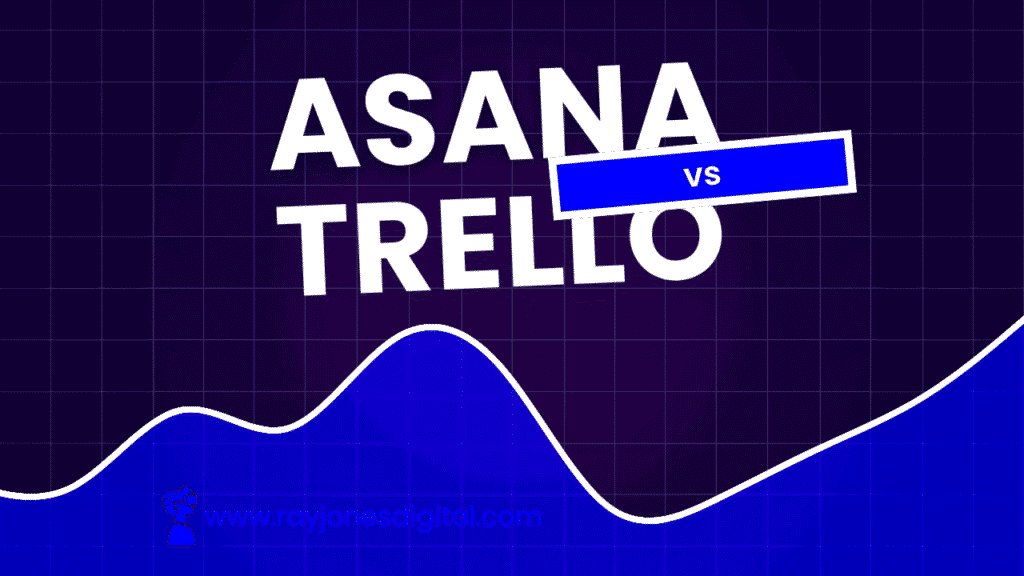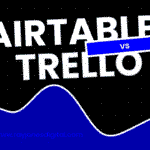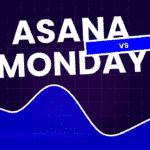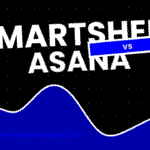
The project management software market has evolved dramatically over the past decade, with two platforms consistently dominating discussions amongst teams worldwide: Asana and Trello. Both tools promise to transform how teams collaborate, organise tasks, and deliver projects, but they approach project management from fundamentally different angles.
This comprehensive comparison examines their core features, usability, pricing structures, and target audiences to help you determine which project management platform aligns with your team’s workflow and business requirements.
Understanding Modern Project Management Needs
Teams across industries face increasing pressure to deliver projects faster whilst maintaining quality and staying within budget. Traditional project management approaches often involve complex software that requires extensive training, rigid workflows that don’t adapt to changing requirements, or simple tools that lack the sophistication needed for complex projects.
Modern project management platforms must deliver several critical capabilities: intuitive task organisation, seamless team collaboration, flexible workflow customisation, and comprehensive progress tracking. The challenge lies in balancing simplicity with powerful features whilst ensuring the platform scales effectively as teams and projects grow.
Effective project management tools must also address specific team dynamics, from creative agencies managing client campaigns to software development teams coordinating product releases. The rise of remote work has created additional demand for platforms that facilitate clear communication and visibility across distributed teams.
Trello: The Visual Kanban Champion
Trello revolutionised project management by bringing the Japanese Kanban methodology to digital teams through its distinctive card-and-board interface. The platform emphasises visual organisation and simplicity, making project management accessible to teams who find traditional tools overwhelming.
Core Features and Capabilities
Kanban Board System: Trello’s foundation rests on its intuitive board system where tasks appear as cards that move through customisable columns representing different project stages. This visual approach provides immediate clarity on project status and task distribution.
Power-Ups Integration: The platform extends functionality through Power-Ups that connect with popular tools like Google Drive, Slack, and time tracking applications. These integrations transform Trello from a simple task manager into a comprehensive workflow hub.
Team Collaboration Tools: Trello facilitates collaboration through card comments, file attachments, due dates, and team member assignments. Team members can subscribe to specific cards to receive notifications about relevant updates.
Template Library: The platform offers pre-designed board templates for common project types including marketing campaigns, software development sprints, and event planning. These templates provide structured starting points for teams new to Kanban methodology.
Mobile Accessibility: Trello’s mobile applications maintain full functionality, allowing team members to update project status, add tasks, and collaborate effectively regardless of location.
Automation Features: Butler, Trello’s automation tool, enables teams to create rules that automatically move cards, assign team members, and trigger notifications based on specific conditions.
Pricing Structure
Trello operates on a freemium model with clear upgrade paths:
- Free Plan: Unlimited personal boards with basic features for teams up to 10 members
- Standard Plan: £4 per user per month with advanced features and unlimited Power-Ups
- Premium Plan: £8 per user per month adding timeline view, calendar integration, and advanced security
- Enterprise Plan: £13.50 per user per month with enhanced admin controls and enterprise-grade security
The platform’s pricing model allows small teams to use core functionality without cost whilst providing clear value propositions for upgrading as needs grow.
Target Audience
Trello primarily serves teams who value visual simplicity and straightforward project tracking:
- Creative agencies managing client projects and campaigns
- Small business teams coordinating operational tasks
- Marketing teams planning content calendars and campaign workflows
- Personal productivity enthusiasts organising individual projects
- Remote teams needing clear visual communication tools
Asana: The Comprehensive Project Powerhouse
Asana positions itself as a comprehensive work management platform designed for teams who need sophisticated project tracking, resource management, and workflow automation. The platform emphasises flexibility and scalability over visual simplicity.
Core Features and Capabilities
Multiple Project Views: Asana offers various project visualisation options including list view, board view (similar to Kanban), timeline view (Gantt charts), and calendar view. This flexibility allows teams to work in their preferred format whilst maintaining project consistency.
Advanced Task Management: The platform supports complex task hierarchies with subtasks, dependencies, and custom fields. Teams can create detailed project structures that reflect real-world workflow complexity.
Goal Tracking and Portfolios: Asana enables teams to connect individual tasks to broader business objectives through goal tracking and portfolio management features. This alignment helps maintain strategic focus throughout project execution.
Workflow Automation: The platform includes sophisticated automation capabilities through Forms, Rules, and Proofing features. Teams can automate repetitive tasks, standardise processes, and streamline approval workflows.
Resource Management: Asana provides workload management tools that help teams balance capacity, identify bottlenecks, and optimise resource allocation across multiple projects.
Reporting and Analytics: The platform offers comprehensive reporting features including project dashboards, progress tracking, and performance analytics that provide insights into team productivity and project health.
Advanced Collaboration: Teams benefit from proofing tools, real-time commenting, and @mention notifications that facilitate detailed project discussions and feedback loops.
Pricing Structure
Asana operates on a tiered subscription model designed for growing teams:
- Basic Plan: Free for teams up to 15 members with core project management features
- Premium Plan: £8.75 per user per month adding timeline view, custom fields, and advanced search
- Business Plan: £21.25 per user per month with portfolios, workload management, and advanced integrations
- Enterprise Plan: Custom pricing with enhanced security, admin controls, and dedicated support
The platform’s pricing reflects its comprehensive feature set and typically costs more than simpler alternatives, positioning it as a professional solution for serious project management needs.
Target Audience
Asana primarily serves teams who need comprehensive project management capabilities:
- Software development teams managing complex product roadmaps
- Marketing teams coordinating multi-channel campaigns with detailed workflows
- Professional services firms managing client projects and resource allocation
- Operations teams overseeing cross-functional initiatives
- Growing companies needing scalable project management infrastructure
Feature Comparison: Simplicity vs Sophistication
The fundamental difference between these platforms lies in their design philosophy: Trello prioritises visual simplicity and ease of use, whilst Asana focuses on comprehensive functionality and workflow sophistication.
User Interface and Experience
Trello’s interface centres around the familiar board-and-card metaphor that most users understand intuitively. The platform’s clean design minimises cognitive load, allowing teams to focus on work rather than learning software functionality.
Asana’s interface accommodates multiple project views and advanced features, resulting in a more complex but powerful user experience. The platform requires a steeper learning curve but rewards users with sophisticated project management capabilities.
Task Organisation and Hierarchy
Trello organises tasks as cards within lists, providing a flat structure that works well for straightforward workflows. The platform handles simple task hierarchies through checklists within cards but lacks sophisticated dependency management.
Asana excels in complex task organisation with support for subtasks, dependencies, milestones, and custom fields. Teams can create detailed project structures that reflect intricate workflow requirements and interdependencies.
Collaboration and Communication
Trello facilitates collaboration through card comments, file attachments, and team member assignments. The platform keeps communication simple and contextual to specific tasks or project areas.
Asana provides more comprehensive collaboration tools including proofing features, project conversations, and advanced notification settings. The platform supports detailed project discussions and complex approval workflows.
Workflow Flexibility and Customisation
Both platforms offer customisation options, but their approaches serve different complexity levels and team requirements.
Workflow Adaptation
Trello’s flexibility comes from its simple foundation that teams can adapt through creative board organisation and Power-Up integrations. The platform works well for teams who need straightforward workflow customisation.
Asana provides extensive workflow customisation through custom fields, project templates, and automation rules. Teams can create sophisticated workflows that match complex business processes and requirements.
Integration Capabilities
Trello connects with popular business tools through its Power-Ups marketplace, enabling teams to enhance functionality without leaving the platform. These integrations typically focus on adding specific capabilities rather than deep workflow integration.
Asana offers comprehensive integration options with business tools, API access, and native connections with popular software. The platform enables deeper workflow integration and data synchronisation across business systems.
Scaling and Growth
Trello scales effectively for visual project management needs but may become limited as project complexity increases. Teams often need to supplement Trello with additional tools for advanced project management requirements.
Asana is designed for scaling from small teams to enterprise organisations with features that support growing complexity, larger teams, and sophisticated project management needs.
Performance and Reliability
Both platforms deliver reliable performance, but their approaches to handling different usage patterns and team sizes vary significantly.
Speed and Responsiveness
Trello’s simple architecture typically provides fast loading times and responsive interactions, even with large numbers of cards and boards. The platform handles typical team usage patterns efficiently.
Asana maintains good performance across its various features and views, though the platform’s comprehensive functionality can occasionally result in slower loading times for complex projects or large datasets.
Mobile and Offline Capabilities
Trello’s mobile applications provide full functionality with offline capabilities, allowing teams to work effectively regardless of connectivity. The platform synchronises changes seamlessly when connectivity returns.
Asana offers capable mobile applications with most desktop functionality, though some advanced features work better on desktop. The platform provides limited offline capabilities with automatic synchronisation.
Data Security and Compliance
Both platforms provide enterprise-grade security features, but their compliance offerings differ based on their target markets and pricing tiers.
Trello includes standard security features across all plans with enhanced options available in Enterprise tiers. The platform meets common compliance requirements for most business applications.
Asana offers comprehensive security and compliance features, particularly in higher-tier plans. The platform provides detailed audit trails, advanced admin controls, and compliance certifications required for larger organisations.
Pricing and Value Analysis
Cost Effectiveness
Trello’s freemium model provides excellent value for small teams and simple projects. The platform offers substantial functionality without cost whilst providing clear upgrade paths for growing needs.
Asana’s pricing reflects its comprehensive feature set and professional focus. For teams that can effectively utilise its advanced features, the platform provides strong value through improved project visibility and workflow efficiency.
Return on Investment
Teams using Trello often find value through improved project visibility and streamlined communication. The platform enables better organisation and collaboration without overwhelming users with complex features.
Organisations leveraging Asana’s capabilities typically see ROI through improved project delivery, better resource utilisation, and enhanced team coordination. The platform’s reporting and analytics features provide insights that drive continuous improvement.
Use Case Scenarios
Creative and Marketing Teams
Creative agencies and marketing teams often prefer Trello for its visual approach to project management. The platform’s board system works well for campaign planning, content calendars, and client project tracking.
Asana appeals to marketing teams who need sophisticated campaign management, resource planning, and detailed workflow automation. The platform’s goal tracking and portfolio features support strategic marketing planning.

I am Ray Jones Digital
My current occupations: a Digital Marketer, Local SEO expert, Link Builder, and WordPress SEO specialist. Shopify SEO, Ecommerce Store Management, and HTML & WordPress Developer I have been practicing the above mentioned services for more than 10 years now As an SEO expert working with your ongoing projects.



